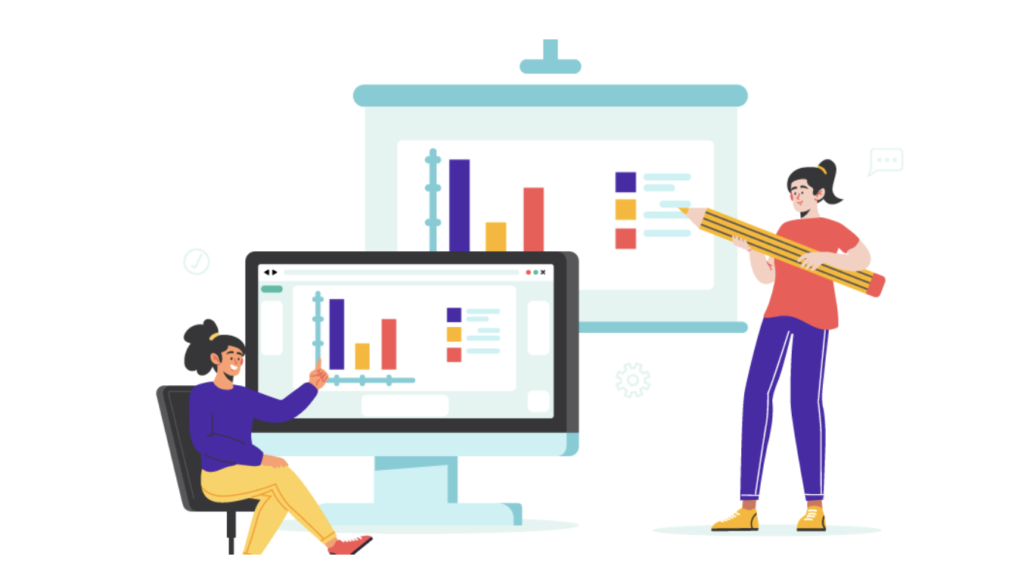There are many definitions of hybrid learning given in the literature. In some of them, hybrid learning is used as a synonym of blended learning which employs a pedagogical approach of combining face-to-face training with online learning activities.
However, in this article, hybrid learning will be explored as a way to learn synchronously, i.e., learning in real time, together with your classmates, some of whom are in a traditional classroom, while others are participating in class online. In this teaching method the approach is not only learning through mixed face-to-face and online activities, but learning through an interaction in real time between learners who are in a traditional in-person classroom and learners who are in a virtual classroom.

Over the past year, the need for a new type of instruction has arisen on the educational horizon in part due to the circumstances that were forced upon us by the pandemic – namely, the requirement to avoid the gathering of many people at one place combined with the need to quarantine, both of which make learners unable to participate in face-to-face training activities. Online learning, especially for courses that can be taught asynchronously, offers a very good alternative in these cases. However, we have to keep in mind that this option may not be suitable for young children who don`t yet have the self-discipline needed for this kind of learning.
Furthermore, let us imagine a classroom where half of the students are in class, while the other half are online in front of their computers at home. This learning environment requires the implementation of two different pedagogical approaches, as well as of different teaching strategies. Moreover, the teaching approach in this case will need to be focused on two different groups of people. This makes the task of teaching and learning very difficult. The challenge here is that these two methodologies and strategies (teaching in a traditional classroom and teaching in a virtual classroom at the same time) are part of a common learning process that aims at common learning objectives. The learning outcomes have to be the same for the participants from both groups, no matter which learning environment is used.
Is it worth the effort of creating such complex teaching methodology?
Let`s list some of the benefits of hybrid learning:
1. Complete integration of the learners/an inclusive learning process
Hybrid learning is an approach that allows all of the learners to be included. Part of the students are in a traditional in-person classroom, while the other part participate via an online connection (using a virtual classroom or video-conferencing software). This gives those learners who, for some reason, are not able to participate in the traditional classroom the opportunity to be a part of the process at the same time as their classmates by using technology for online learning.

For example, hybrid learning offers disabled people and learners in remote areas a great opportunity to be fully included in the learning process.
2. A larger audience
Hybrid learning is a way for more participants to be included (by adding countless listeners online). This is applicable in a learning approach that focuses on lecturing where no interaction is expected. In this case, video-conferencing software can be used, but this method has some disadvantages. Interactivity is what makes online learning more effective. It gives the teacher the opportunity to create a learning environment where it is expected from the learner to not only be a passive listener, but to also actively participate in the process. This can help students develop skills for analyzing the material, applying the new knowledge in different situations, and drawing connections between ideas. The real value of online learning in real time is that it gives students the capability for interaction and active learning.
Furthermore, if we want to include interaction in the learning process, we need:
3. Flexibility
Hybrid learning allows the teacher to be flexible and to apply different pedagogical approaches. The challenge is that they should be experienced in delivering both face-to-face and online trainings. For example, using tools such as online whiteboard for the learners who are in a virtual classroom and a traditional notebook for the rest of the class in the traditional classroom can be a very effective approach in hybrid learning. Also, the possibility to use tools for mind mapping for both virtual and traditional classrooms can be an effective combination of teaching approaches.
Hybrid learning gives learners the opportunity to participate in class remotely, yet in real time.
4. Collaborative approach/opportunity to interact
The hybrid teaching approach allows both groups of learners (those in the traditional classroom and those learning online) to interact with each other. Using proper teaching methodology allows the teacher to create the kind of dynamics in the group that encourages trust and active participation.

The two groups can be assigned to the same task while using different approaches to it.
For example, the task is: Describe what traditional homes in Ancient Rome looked like.
The learners in the traditional classroom are asked to research this information at the library.
At the same time, the group of the online learners are asked to research this information on the internet.
Afterwards, both groups are asked to report their findings. They are encouraged to present not only the results of their research, but also the approach they used (e.g., if they used pictures, drawings, descriptions with words, etc.). The added value is that they will become familiar with different methods of research.

5. Collaborative approaches in cross-disciplines
Hybrid learning can be very useful in a session with non-homogenous groups or groups with different backgrounds.
Let`s take as an example a group of archeologists who have to learn different approaches to determining the date of an artifact. Then, let`s consider a group of scientists who work in a lab using chemicals for studying the structure of different materials. Both groups can interact and learn from each other in real time, even if they are located in different places, by using proper technologies (e.g., a virtual classroom or other software for visualization and communication) to facilitate their research and interaction with each other. This way they can be in a lab or at the excavation site, etc.
Hybrid learning provides a wide range of possibilities and can offer many benefits for both teachers and students. The main challenge is that the teacher must be able to pay attention to two groups of students at the same time – the students in the traditional classroom and those in the virtual one. There is the risk that one of the groups might end up being neglected or excluded. Thus, this pedagogical approach adds new tasks to the preliminary work that teachers must do in terms of preparing different types of instructions for the two groups, choosing the right approach for each group, and creating suitable exercises.
Laila Azzahra is a professional writer and blogger that loves to write about technology, business, entertainment, science, and health.
